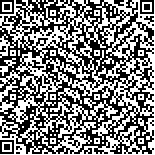| 摘要: |
| 近年来,人们对户外气味环境质量
的重视度显著提升,气味感知作为影响人们
户外游憩舒适度的重要因素,对其量化测定
是研究户外环境气味舒适度及健康效益的必
要手段。然而,目前气味感知量化存在气味
参数多且相互关联,相关测量技术方法多但
缺乏标准等诸多挑战。为此,通过国内外相
关文献的梳理,围绕气味浓度与气味强度、
气味范围与气味频率、气味愉悦度三维度对
气味感知量化技术方法进行了分类整理,总
结发现:第一,气味浓度测量以嗅辨员法为
主,标准化程度高,对嗅辨员培训、人数、
评价方法均有明确的规定,但存在无法连续
检测等问题,相较之下,便携式气味检测仪
时效、时长优势明显,也是实验室研究模拟
气味浓度的重要辅助手段;气味强度量化主
要依托感官评价与量表结合的方法。第二,
气味范围主要依托气味漫步法测定,辅以大
数据技术、便携式气味浓度仪等方法来拓宽
研究规模、改善数据客观性等问题;因户外
气味频率可变性大,网格法、羽流法是气味
频率测定的主要方法,耗时耗力是其主要问
题,从而限制了气味频率测定研究的数量。
第三,气味愉悦度是气味景观目前的主要研
究点,其量化方法多,涉及生理、心理领
域,相对客观稳定,但各方法适用性有限,
需根据不同场景选用。 |
| 关键词: 户外气味环境 气味景观 气味感
知 气味参数 |
| DOI:10.13791/j.cnki.hsfwest.20240116004 |
| 分类号: |
| 基金项目:国家自然科学基金面上项目(52278084) |
|
| The research progress of quantitative methods for outdoor olfactory perception |
|
WANG Ke,JIN Hexian
|
| Abstract: |
| In recent years, people pay more attention to the environmental quality of outdoor odor. As
an important factor affecting people’s outdoor recreation comfort, the quantitative measurement of
odor perception is a necessary means to study the comfort level and health benefits of outdoor odor.
However, the current quantification of olfactory perception faces various challenges, including the
abundance and interconnectedness of olfactory perception parameters, as well as various
measurement techniques and lack of standards. In order to provide reference recommendations for the
selection or combined application of odor landscape research techniques in various scenes, this paper
summarizes odor perception quantification techniques in three dimensions by analyzing pertinent
domestic and international literature. These dimensions include odor concentration and intensity, odor
range and frequency, and odor hedonic tone. In terms of odor concentration and odor intensity, odor
concentration measurement is mainly based on the sniffer method, with a high degree of
standardization. There are clear regulations on the training, number of sniffer and evaluation method,
but there are problems such as the inability to continuously detect. In contrast, the portable odor
detector has obvious advantages in timeliness and duration, and can achieve continuous detection.
However, the response of the instrument to different odors is different, and the feedback values of the
instrument under different odors cannot be compared with each other. At the same time, because of its
high objectivity, portable odor detector has become an important auxiliary means for laboratory
research on simulated odor concentration. Odor intensity is closely related to odor concentration and
sensory threshold, and the quantitative method mainly relies on the subjective evaluation method
combining sensory evaluation and scale. There is no unified standard for the specific procedure of the
method, so the measured results are greatly affected by sample size and individual differences. In
terms of odor range and odor frequency, odor range is mainly measured by Smellwalk, which can
collect the perception data of fine particle size. Smellwalk are often supplemented with big data
techniques such as crawling points of interest to broaden the scale of the study, or with instruments
such as portable odor concentration meters to improve data objectivity. Due to the large variability of
outdoor odor frequency, grid method and plume method are the main methods for odor frequency
measurement, and specific execution procedures are specified by clear standards to strengthen the
scientific conclusion. However, time and labor consumption are the main problems of this method,
which leads to few studies on odor frequency measurement.Odor hedonic tone is the main research
point of odor landscape at present, and there are many quantitative methods. Odor hedonic tone can
be measured by multi-dimensional emotional model or scale, but this method cannot fully reflect the
complex emotions caused by odor. In order to solve this problem, scholars combine the measurement
of physiological indicators such as EEG, EDA, ECG, and fEMG to present the emotional changes
caused by odor in real time. It should be noted that the measurement method of physiological
indicators has high requirements on the experimental environment, and the data is limited by the
accuracy of the instrument, which needs to be selected according to different scenarios.Reviewing the
existing odor perception quantification technologies, subjectivity and individual differences are hard
to avoid. At present, the objectivity of data is mainly improved by setting the conditions of sensorygroup members, combining odor instruments and big data technology. Therefore, in the future, the standardization research of odor sensory analysis, the
integration and practice of technology methods in different fields such as artificial intelligence, medical psychology, materials and instruments will inevitably
become a new research trend. |
| Key words: outdoor olfactory environments smellscape olfactory perception odor parameters |


